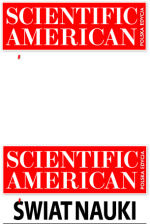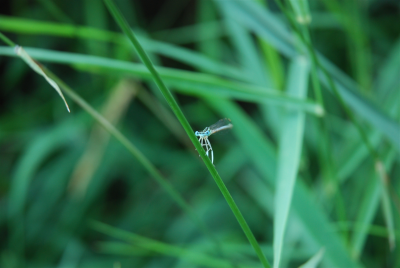 2006
2006
 2008
2008
 2010
2010
 2012
2012
 2014
2014



 |
Mysteries of riparian forests around Goczałkowicki Reservoir
‘Riparian forests of the Goczałkowice dam reservoir in the valley of the Upper Vistula’
Damian Matynia1, Łukasz Chajec2 – authors of photograph, keep an eye on you! [Goczałkowice, July 2010] |

|
Description popularizing the research project
Goczałkowicki Reservoir is 56 years old. We know it exactly as it was created when a dam across the Vistula was built in 1956. Its largely nature-like ecosystem was shaped then. The waters were stocked and a fish farming company was established. Fifty years was enough for the nature itself to shape flora on the lakeshores. The plants are characteristic for such places. They replaced the original species that were more characteristic for fields and meadows.
A longer walk around the Reservoir is enough to notice diversity of flora surrounding it. Large portions of the shore are covered with the forest. In other places, dense shrubs reach the shoreline. The border between water and the shore is blurred with reed beds. It is not a coincidence that some places around the lake resemble lakes in Mazury. The flora around the Reservoir can be also found in river valleys of Polish lake districts. Even amateurs will see similarities. Both here and there grow willows, ashes and alders scattering around characteristic black cones. Specialists, geobotanists, can see much more. They have described over 200 species of plants and specified characteristic plant communities, typical for rivers and lakes in other parts Poland, yet with a local flavour. The lakeshore plant communities are inhabited by beavers and otters; cormorants have taken over crowns of the trees; coots, swans and Azure damselflies found refuge in reed beds. The animals make the plants growing around the Reservoir even more natural.
The green belt around Goczałkowicki Reservoir is important. Firstly, it is like the old wardrobe from the Narnia Chronicles that was the passage between the two worlds. Here it marks the border between water and land. Secondly, it hides teeming life and helps the artificial reservoir integrate with Upper Vistula Valley.
Abstract
The main purpose of the "Easter in Poreche (Republic of Macedonia) - syncretic forms of rituals and beliefs on the Balkans" was the study of rites of Easter, which is part of the annual cycle in the town of Makedonski Brod in the region of Poreche. The study was conducted in 2010 and 2011. The focus was on examining syncretic forms of religion among people of Poreche – pre-Christian substrate, elements of the Orthodox Church and Islamic influences. This was the first such a study conducted in this town by a Polish ethnologist and one of very few at all. The author also wanted to check the process of change that occurred in the socio-cultural field of the area over the past 80 years. Its aim was to compare the results with the achievements of Polish anthropologist Joseph Obrębski, who in 1932-33 was stationed in one of Poreche villages (Volcze) and conducted research in the field of social and cultural anthropology. During the test ethnographic and anthropological methods were used, including participant observation and interviews. Application of these methods was preceded by library queries both in Poland and Macedonia. As a result of the completed project the author provided information on everyday and religious life of a small community of central-western Macedonia in the early twenty-first century. The residents of Makedonski Brod are Orthodox in their beliefs, however, pre-Christian element remained well preserved; influences of the Muslim religion have also been noticed, which resulted from long-established Ottoman presence in the area. Audiovisual data collected allowed the author to create an ethnographic film "Vtor Veligden den", while other data are being prepared and will be used in the emerging scientific publication.
Patronat honorowy
Leszek Jodliński
Dyrektor Muzeum Śląskiego w Katowicach
Zygmunt Łukaszczyk
Wojewoda Śląski
Jan Malicki
Biblioteka Śląska
Piotr Uszok
Prezydent Katowic
Adam Matusiewicz
Marszałek Województwa Śląskiego














